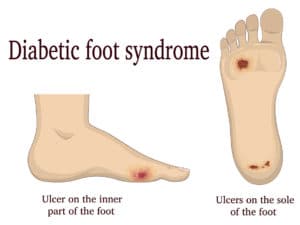Canagliflozin was the first in a new class of type-2 diabetes drugs to work by forcing the kidneys to remove more sugar from the body in urine. Excessive urination can potentially cause dehydration and blood volume depletion in high-risk patients that exacerbates circulatory problems.
CANVAS and CANVAS-R, two large clinical trials that began in 2009 with 10,000 patients on canagliflozin or a placebo, released early data last year that prompted the FDA to warn about amputation risks.
The risk was approximately 7 amputations per 1,000 patients on canagliflozin vs. 3 amputations per 1,000 patients on a placebo, or more than twice the risk.
The new Boxed Warning, the strongest label the FDA can place on a prescription medication, will now inform patients about the risk of amputation from canagliflozin.
Diabetic foot is a common problem in people with type-2 diabetes, a disease that causes chronic high-blood sugar levels. Over time, the disease destroys nerve endings in the feet and hardens blood vessels that carry blood to the toes. This is a risk-factor for infections that do not heal very well, otherwise known as ulcers, and tissue necrosis that requires amputation.
The FDA noted that most of the reports involve toes and the middle foot, but leg amputations above and below the knee occurred in the trials, as well as people who had multiple toes or both legs amputated.
Patients on canagliflozin are urged to notify their health care professional right away if they notice new pain or tenderness, sores or ulcers, or infections in their legs or feet.
Healthcare professionals are urged to consider risk-factors that may predispose patients on canagliflozin to the need for amputations, such as a history of prior amputation, peripheral vascular disease, neuropathy, and diabetic foot ulcers.
Source: FDA Says Invokana Poses Increased Risk of Leg, Foot Amputations

